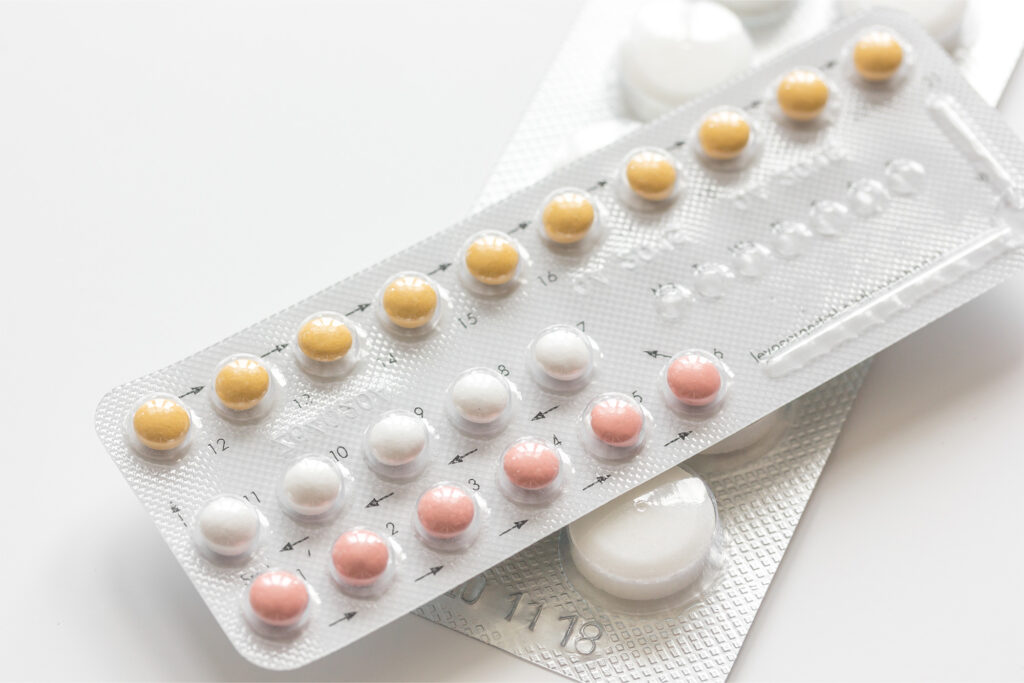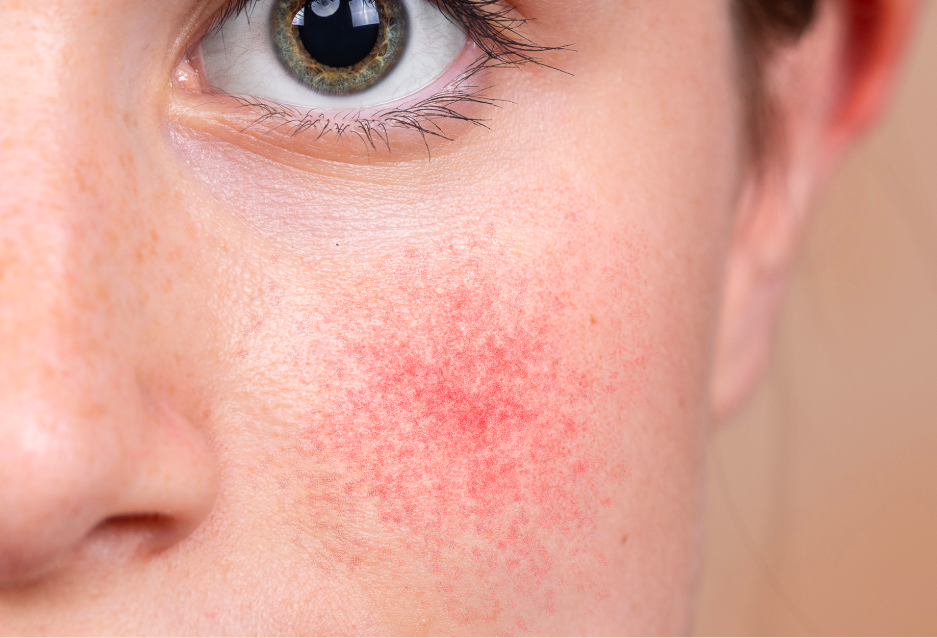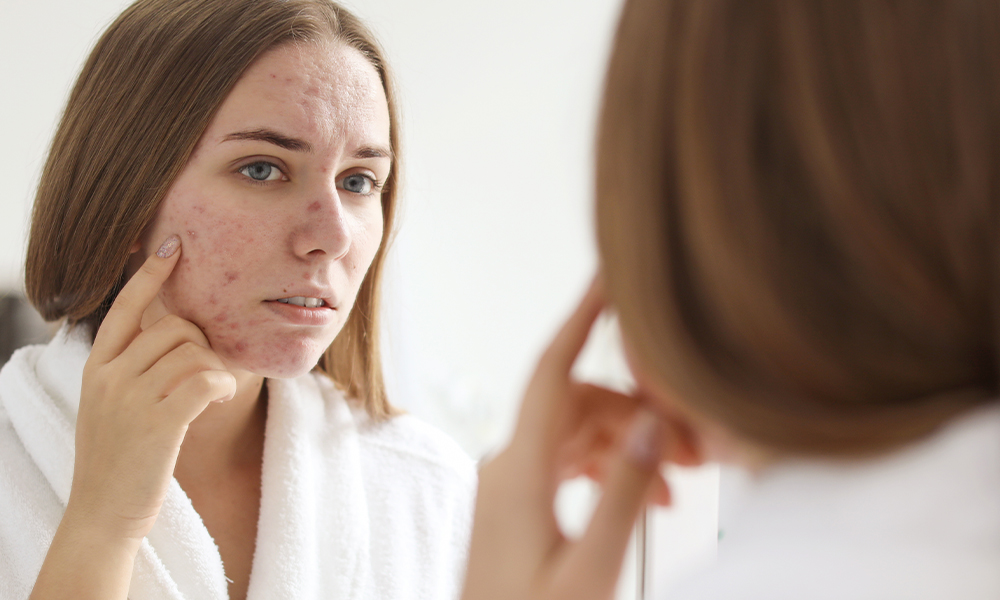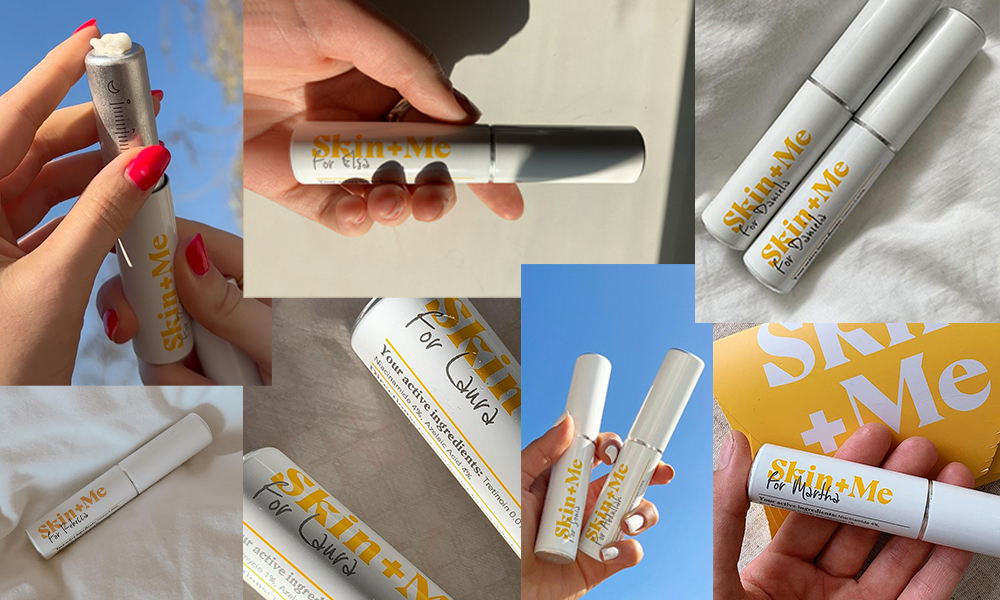Rosacea Awareness Month: Five Things to Know About Rosacea

Ask A Clinician: How Does Contraception Affect Your Skin?
Authors: Jenni Mai and Aman Souni
Ever wondered why your skin changes so much when starting or stopping hormonal contraceptives? For many women, hormonal contraceptives are great for clearing up acne and oily skin, regulating heavy periods and preventing pregnancy. For others, it can be equally tough on the skin, ranging from breakouts to pigmentation and dry skin. In this article, we’ll explore the different ways in which your hormonal contraception can affect your skin, why these changes happen and discuss skin hacks you can try at home to keep your skin glowing and clear.
Hormones and your skin
Hormonal contraception can come in a number of forms, including the hormonal contraceptive pill, patches, implants, rings, coils (IUDs) and many more.
Contraceptives work by adjusting the level of sex hormones in our bodies and there are three main hormone groups involved, which can play a big influence to the look and feel of our skin (1): oestrogen, progesterone and androgens (a group of hormones including testosterone).
Hormonal contraceptives will either contain low level progesterone on its own, or a combination of both oestrogen and progesterone. Knowing the different types of hormones in your contraceptives is really useful, as it helps to understand the effects it can have on your skin type.
While it’s true that certain contraceptives can work wonders on the skin, not all hormonal contraceptives have the same effects. This means one type might help to clear your skin, and another could actually trigger dryness or spots. The benefits – and side effects – vary depending on the type of contraceptive you use.
Can hormonal contraceptives cause acne?
In terms of acne and breakouts, both oestrogen and progesterone can affect the production of sebum, an oily substance produced by the sebaceous glands on the face. Sebum is usually secreted to keep our hair and skin from drying out, but when the glands start to produce too much of it, this can mix with dead skin cells and cause blocked pores resulting in acne flare-ups. (2)
Androgens can stimulate sebum production and cause unwanted hair growth and oily skin. These hormones are not found in contraceptives, however different progestins (man-made forms of progesterone which are used in contraceptives) can have different “androgenic” effects. (3) Progestins that have higher androgenic effects will likely cause an increase in sebum production.
In short, oestrogen-containing contraceptives can reduce oil production in the skin, and can help to improve acne and breakouts, whereas certain progestins have been shown to worsen acne and trigger acne flare-ups due to increased oil production. (4,5)
This is why it’s common that when you stop using these contraceptives or switch to a different one, you might experience acne flare-ups as your body adjusts to the changing hormone levels.
Can hormonal contraceptives cause melasma?
Another way some contraceptives can change your skin include making your skin more likely to develop melasma. Melasma (also known as Chloasma) is a condition that causes brown to brownish-grey patches of hyperpigmentation to appear on sun-exposed skin and mainly appears as bilateral patches on the face (6).
Melasma is most commonly seen in pregnant women, however it can also appear in many women who are not expecting, more often in those taking medicines that affect sex hormones such as hormonal contraceptives. Some other causes of melasma may include genetics, hypothyroidism, certain medications and tanning beds.(7)
Studies have shown that both oestrogen and progestin can make your skin more susceptible to developing melasma, meaning all hormonal contraceptive methods, whether it be the mini-pill, IUD, patches etc. have the same potential. (8) If hormonal medications are the main cause of your melasma, you may potentially start to see improvements after stopping these medications (7).
Building a skincare routine for healthy skin
If you have acne-prone skin, you should use non-comedogenic skincare products and avoid applying oily ingredients to your face that could block your pores. We would also advise to include a personalised treatment in your evening skincare routine, such as the Skin + Me Daily Doser.
Other ingredients that can help include BHAs such as salicylic acid or benzoyl peroxide, which can be incorporated in your morning routine as a face wash. If your skin is feeling particularly oily, then it’s completely fine to skip your moisturiser until this is better controlled, or you could also consider oil-free moisturisers. Lastly, make sure you use a gentle cleanser twice a day but be mindful not to overwash your face. Though it feels counterintuitive, cleansing your face too frequently can cause an increase in oil production.
While combined contraceptives can help to control oiliness in those with acne-prone or oily skin, these are not ideal for everyone, and can negatively affect those with dry skin. To help combat dryness, ensure adequate hydration of the skin with a hydrating non-comedogenic moisturiser. This is particularly important when using concurrent active ingredients such as retinoids, benzoyl peroxide or BHAs, which can be quite drying on the skin.
One thing you can do to prevent melasma (or hyperpigmentation) is apply adequate sunscreen with a sun protection factor (SPF) of at least 50, ideally with visible light protection and avoid excessive sun exposure. Sunscreen is essential for any time of year, regardless of whether you are indoors or outdoors. If you already have melasma, there are a range of over-the-counter ingredients and prescription treatments available to help tackle it. Also, ensure that you avoid certain triggers such as tanning beds, waxing and scented products. (7,8)
Final thoughts
It’s worth noting that there are many other factors that can affect our skin, and hormonal contraceptives may not always be the main culprit. Hormonal contraceptives are still beneficial in many ways and by adapting your skincare routine, it’s definitely possible to continue use without sacrificing your skin. Of course, if you feel that any of your skin concerns may be related to your contraceptive, it’s important to discuss with your GP, or your Pharmacist Clinician if you’re a Skin + Me member, to explore the safest and best-suited options for you and your skin.
References
- https://www.ncbi.nlm.nih.gov/pmc/articles/PMC5015761
- https://www.nhs.uk/conditions/acne/causes
- https://pubmed.ncbi.nlm.nih.gov/7825631
- https://www.ncbi.nlm.nih.gov/pmc/articles/PMC5015761
- https://dermnetnz.org/topics/oral-contraceptive
- https://www.sciencedirect.com/topics/pharmacology-toxicology-and-pharmaceutical-science/chloasma
- https://my.clevelandclinic.org/health/diseases/21454-melasma
- https://dermnetnz.org/topics/melasma
New to Skin + Me? Get your first month of personalised skincare for £4.99 with promo code DOSE – complete our quick consultation here.
Looking for a routine refresh? Add the Dream Routine to your Skin + Me subscription.
In need of a restock? Head to The Skincare Shop for one-off purchases of your Routine Essentials.



